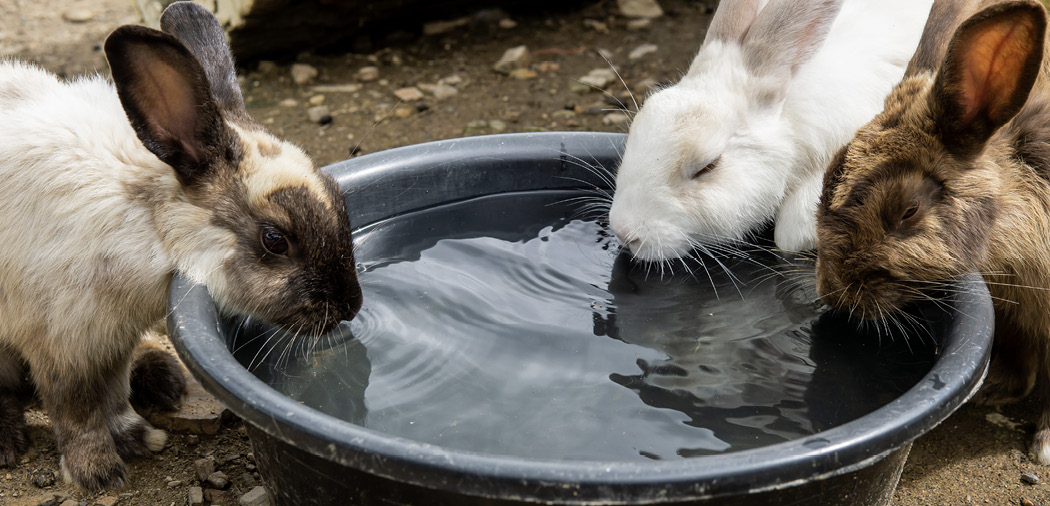Rabbit Hemorrhagic Disease Virus
What Clinicians Need to Know
Rabbit hemorrhagic disease, the deadly virus that emerged in North America in the midst of the COVID-19 pandemic, is showing up again in 2022, this time with cases in Florida and a first-time appearance in Ontario, Canada. This virus affects both domestic and wild rabbits, leading to sudden death, liver failure, neurological signs, and bleeding from the nose and genitourinary tract.
A diagnosis of rabbit hemorrhagic disease is heartbreaking for families who have welcomed pet rabbits into their homes. And while dogs and cats still top the list of companion animals in the US, more and more people are choosing non-traditional pets, or exotic pets, as their animal companions.
According to a 2022 survey conducted by Forbes Advisor, 78% of the 2,000 US adults surveyed had acquired a pet during the pandemic. While older generations tended to stick with more traditional animal companions, the survey found that Gen Z adults, ages 18-25 years, were far more invested in nontraditional pets. Twenty-eight percent chose to live with rabbits, which means, if this trend continues among the younger generations, more and more rabbits may be showing up in veterinary practices. And with them, their diseases. Knowing how to prevent, recognize, and when to report cases of rabbit hemorrhagic disease virus can help clinicians be prepared if they come across this devastating disease.
Where Did RHDV2 Come From?
Rabbit hemorrhagic disease virus (RHDV) is considered a foreign animal disease in the US. It likely first emerged in Europe in the 1970s and 1980s, where it affected the European rabbit (Oryctolagus cuniculus). In 1984, the disease killed 14 million domestic rabbits in China in less than a year. By the 1990s, RHDV had spread to 40 countries, often leaving behind a massive death toll.
A particularly virulent strain of rabbit hemorrhagic disease virus, RHDV2, emerged in Europe in 2010. This strain affected both European rabbits and some species of hares (Lepus spp.) and sickened rabbits that already had immunity to previous strains of RHDV. Like RHDV, RHDV2 has spread globally and is now the more common strain in some areas.
RHDV2 was diagnosed in a domestic rabbit in New York City in February 2020. After the disease was found in another rabbit in March 2020 in New Mexico, RHDV2 continued to spread across New Mexico and other southwestern states. In New Mexico, around 480 domestic rabbits died from the virus, with an additional 500 killed by depopulation strategies. Mortality rates for the virus range between 5 and 70%, and until about a year ago, the only readily accessible way to prevent it was through stringent biosecurity measures.
The virus is now considered to be endemic in eleven states, including Texas, Colorado, New Mexico, Arizona, Utah, California, Montana and Wyoming, according to the USDA. In 2022, new cases occurred in domestic rabbits in California, Arizona, and New Mexico, as well as appearing outside of the endemic area in Washington state and Florida. Prior to 2022, rabbit hemorrhagic disease has appeared sporadically in at least 21 states, so it is likely that it will eventually spread throughout the US.
Etiology
RHDV and RHDV2 are caused by rabbit caliciviruses in the genus Lagovirus.
Clinical signs include:
- Inappetence
- Depression
- Lethargy
- Fever
- Frothy, bloody nasal discharge
- Bloody urogenital discharge
- Conjunctival congestion
- Ocular hemorrhages
- Icterus
- Respiratory distress
- Diarrhea
- Weight loss
- Bloating
- Collapse and death
Death is generally due to liver failure or hemorrhage, and the virus causes lesions throughout the liver, heart, and lungs. It also interferes with clotting. Rabbits can die within 36 hours of developing symptoms. There is a peracute form where rabbits are found dead without seeming to exhibit any signs, and an acute form where rabbits hemorrhage and die within 24-72 hours.
The virus is spread when viral particles contact the mouth, eyes, and nose. It is likely that very few virus particles can lead to infection. Bodily fluids from infected rabbits can transmit the disease. It is highly stable in the environment and can be spread over long distances by biting insects. The virus can also survive on deceased bodies, food items, water bowls, and clothing. Rabbits who survive the virus need to be isolated from other rabbits for at least a month, due to prolonged viral shedding.
Diagnosis, Treatment, and Prevention
Viral antigen tests and RT-PCR tests can be used to diagnose rabbit hemorrhagic disease. There is no treatment available for the virus itself, and rabbits must be given supportive care.
When RHDV2 first emerged in the US, preventive strategies relied mainly on biosecurity measures. These included disinfection, avoiding contact between domestic and wild rabbits, and quarantining any new rabbits for at least 30 days. Vaccines developed in Europe for the disease were not readily available and required special permission to import. While biosecurity measures remain critical to disease prevention, there’s now a vaccine for RHDV2 available in the US.
In 2021, Medgene Labs received emergency use authorization by the USDA for its RHDV2 vaccine. The vaccine is now available in 45 states and the District of Columbia. Medgene updates its website on a regular basis when the vaccine becomes available in other states. To acquire the Medgene vaccination, clinicians should contact their state veterinarian for instructions.
Is it Zoonotic?
RHDV and RHDV2 only affect rabbits and hares. Humans are not at risk from this disease, nor are other animals.
Do Veterinarians Have to Report it?
Rabbit hemorrhagic disease is reportable in the US at both the state and federal levels, as well as to the World Organization for Animal Health. If this disease is suspected, immediately contact your USDA APHIS Area Veterinarian and/or your state veterinarian. 

 |
Ingrid Taylor, DVM, is AAHA's Guidelines Editorial Director. |
Photo credits: Aiman Khair bin Samsol Hairi/iStock via Getty Images




